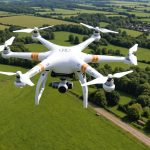Overview of Greenhouse Gas Emission Monitoring
Understanding the importance of monitoring greenhouse gas emissions is crucial in tackling climate change. Monitoring these emissions allows us to gauge their environmental impact accurately and manage mitigation efforts effectively. Traditionally, this process relied on methods like direct measurements from stations and sampling techniques. These approaches, while foundational, present limitations in coverage and real-time data acquisition.
Recently, there’s been a surge of interest in adopting innovative monitoring techniques. Advancements have brought forth newer technologies capable of providing comprehensive data. Remote sensing, for example, can track emissions over large areas by utilising satellite imagery, making it easier to identify patterns and detect anomalies. IoT devices also play a pivotal role by offering real-time data collection from various emission sources.
Have you seen this : Revitalizing Rural Healthcare: Top Strategies for Successful Telehealth Integration in UK Communities
Harnessing these technologies not only enhances our understanding but also empowers decision-making. Environmental scientists and policymakers can use this enriched data to draft and implement more effective regulations. Moreover, integrating Big Data and AI for data analysis allows for predictive modeling, which is essential to proactive environmental management, ultimately aiding in reducing the overall environmental impact of greenhouse gases.
Innovative Technologies in Emission Monitoring
Incorporating innovative technologies in emission monitoring has revolutionised the approach to tracking greenhouse gases. Groundbreaking advancements like remote sensing offer a comprehensive method to observe emissions over extensive geographic areas, utilising satellite data. This technique allows for precise identification of emission patterns and anomalies without the need for numerous physical installations on the ground.
Also to discover : Revolutionizing City Travel: Unlocking the Advantages of Smart Transport Innovations in UK Urban Areas
Moreover, the integration of IoT devices has been transformative. These devices offer real-time data collection capabilities from different emission sources, ensuring continuous monitoring and timely interventions. They bridge the gap between data collection and immediate application of solutions.
The role of Big Data and AI in emission monitoring cannot be overemphasised. These technologies facilitate the processing and interpretation of vast datasets generated by monitoring technologies. AI-driven predictive analytic models enable scientists to anticipate future emission trends, enhancing proactive regulatory measures.
A deeper dive into the UK context shows practical applications and successes. Technologies integrating remote sensing and IoT are currently employed in initiatives monitored by environmental agencies, ensuring enhanced compliance with emission standards. These advancements have shown effective emission management, reflecting significant reductions. As these technologies develop, the potential for broader application and increased accuracy in emission monitoring continues to grow.
Regulatory Frameworks Supporting Emission Monitoring
The UK has established robust regulatory frameworks that uphold stringent standards for emission monitoring. Key policies like the Climate Change Act mandate comprehensive greenhouse gas emissions assessments, compelling industries to adhere to defined limits. These frameworks are essential in guiding emission monitoring efforts, propelling the nation towards its climate goals.
Government agencies play a crucial role in enforcing these environmental policies. The Environment Agency, for instance, ensures compliance with national and international standards, working closely with industries to align their monitoring practices with established guidelines. Their oversight guarantees monitoring is consistent, transparent, and supportive of national reduction targets.
International agreements, such as the Paris Accord, significantly influence UK monitoring standards. They necessitate that local frameworks align with global commitments, ensuring the country’s climate strategies are part of a broader effort to mitigate environmental impact. The alignment fosters uniformity in reporting, making comparisons across borders seamless and effective.
These monitoring standards not only enable the UK to maintain accountability but also pave the way for innovation in tracking techniques. By continually updating these regulations, the UK encourages the adoption of innovative technologies, enhancing the overall effectiveness of emission monitoring.
Case Studies of Successful Emission Monitoring Initiatives
In the UK, innovative emission monitoring initiatives have highlighted practical solutions in mitigating greenhouse gas emissions, providing valuable insights for future projects. These case studies shed light on the effective integration of both technology and policy.
One notable example is the collaboration between government bodies and private companies in creating smart cities. Glasgow stands as a leader, having implemented a comprehensive system using IoT sensors throughout the city to monitor emissions in real-time. This project not only enhanced emission monitoring accuracy but also improved public awareness through data transparency, enabling residents to contribute to emission reduction efforts.
In London, the Low Emission Zone initiative exemplifies a successful public-private partnership. By enforcing strict emissions standards and incorporating advanced monitoring technologies, London has significantly reduced vehicle emissions. A key lesson from this initiative is the importance of engagement and collaboration, enabling stakeholders across sectors to align goals and strategies for optimal outcomes.
These projects reaffirm that embracing cutting-edge technology while fostering collaboration can create scalable and effective solutions. They provide a roadmap for other cities and countries aiming to achieve sustainable environmental impact reductions. Ultimately, such initiatives play a critical role in meeting national and international climate targets.
Expert Opinions on the Future of Emission Monitoring
Expert insights provide valuable perspectives on the evolution of emission monitoring and its future trajectory. Leading environmental scientists agree that technologies such as AI and IoT are set to play an increasingly pivotal role. When asked about emerging trends, experts forecast that emission monitoring will become more integrated, leveraging enhanced data analytics for more precise environmental assessments.
Looking forward, expert predictions suggest a shift towards real-time monitoring systems. This advancement could significantly improve the accuracy and timeliness of capturing emission data, enabling more responsive interventions. Additionally, the convergence of digital and environmental technologies is expected to streamline processes, making monitoring more accessible to various sectors.
However, potential challenges exist in implementing these cutting-edge techniques. Experts caution about barriers such as the initial cost of deployment, data privacy concerns, and the need for international collaboration to ensure consistency across borders. Overcoming these challenges requires robust policy frameworks and a collaborative approach among stakeholders.
In summary, the future holds promising developments in emission monitoring driven by technological innovations. Ongoing advancements are poised to enhance both environmental sustainability and regulatory effectiveness, supporting global efforts against climate change.
Impact Assessment of Emission Monitoring Techniques
Evaluating the impact assessment of emission monitoring techniques is essential to understanding their role in reducing greenhouse gas emissions. These novel methods have shown promise in enhancing emission reduction strategies across various sectors, supporting sustainability efforts.
New monitoring techniques, like remote sensing and IoT devices, are crucial in achieving accurate data collection, leading to more targeted and effective interventions. This precision enables industries to fine-tune their emissions strategies, lowering their overall environmental footprint. This effort not only benefits the planet but also aligns with economic incentives, as businesses can avoid penalties and even gain financial rewards for compliance with emission standards.
The relationship between monitoring, reporting, and actual emission reduction outcomes is interconnected. Effective reports derived from precise monitoring allow policymakers to draft better regulations and strategies. These insights lead to greater transparency and accountability, ensuring that reductions are both measurable and verifiable.
Despite these benefits, the widespread adoption of these advanced technologies involves financial implications. Initial setup costs and maintenance can be significant, but over time, the efficiency and cost savings from reduced emissions offset these investments. Thus, integrating these technologies aids in establishing a sustainable future with long-term economic gains.








